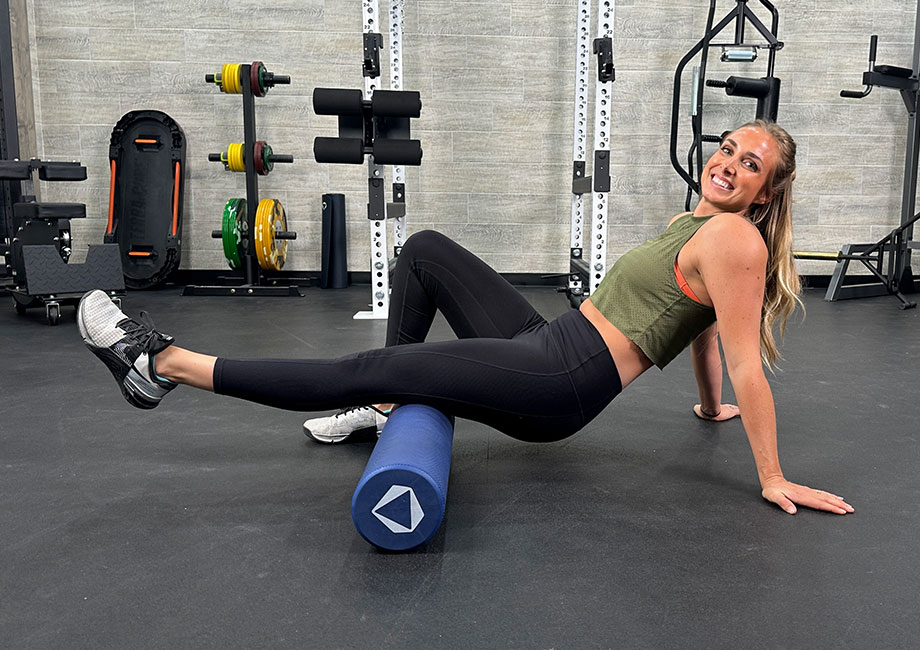We test and review fitness products based on an independent, multi-point methodology. If you use our links to purchase something, we may earn a commission. Read our disclosures.
What do you do after a great workout— hit the showers, down your best protein shake, take a little time to stretch and stave off that all-too-familiar post-workout DOMS?
Practicing a little self-care after your daily dose of fitness is always an excellent idea. And when it comes to the best post-workout recovery practices, foam rolling is one of the best.
Foam rolling reduces tightness, alleviates muscle soreness, and promotes recovery, so you’re right back at it again before long. We’re covering nine of the best foam roller exercises to pencil into your post-workout routine.
So, grab a foam roller and let’s get to work!
RELATED: What is Active Recovery?
Medical disclaimer: This article is intended for educational and informational purposes only. It is not intended as a substitute for medical advice. For health advice, contact a licensed healthcare provider.
What Is Foam Rolling?
Put simply, foam rolling involves using a foam roller, or cylinder-shaped tool made from solid foam, to roll over sore muscles that yields various benefits, including reduced muscle tightness and soreness and improved recovery after exercise.
The earliest known use of a foam roller goes back to the mid-to-late 20th century, but they originally were used as balance supports by practitioners of engineer and scientist Moshé Feldenkrais’ eponymous method of physical therapy.
Feldenkrais Method1 practitioners soon discovered that foam rollers held more value than just serving as pseudo crutches, and word spread that using them as a self-massage tool was effective for reducing tightness and soreness in various muscle groups.
It wasn’t until the mid to late 1990s, however, that the practice of foam rolling would really catch on thanks to then-PT, now-DPT Michael A. Clark, who spoke widely about the merits of foam rolling and used the term “self-myofascial release” (or SMR) to describe its effect on the human body.
Dr. Clark published 2001’s Integrated Training for the New Millenium, which detailed various training modalities, post-recovery practices, and the benefits of foam rolling for SMR2.
Foam rolling surged in popularity, and as they say, the rest is history.
Benefits of Foam Rolling
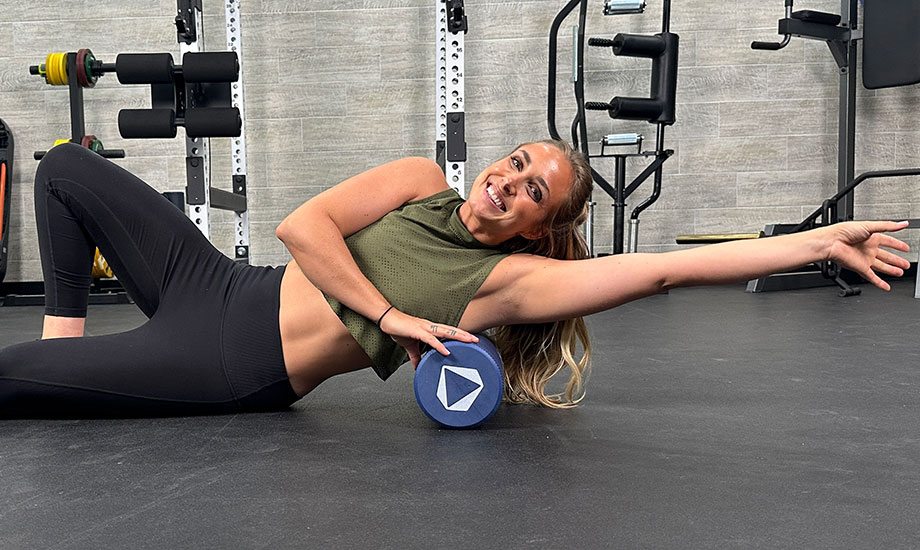
Foam rolling sounds like it should be soft and pleasant, but that isn’t always the case. Beginners can become deterred due to the general painfulness of the practice when muscles are tight. So, what should you expect to get out of this common post-exercise activity?
According to a 2015 study published in the Journal of Athletic Training3, foam rolling following exercise can help alleviate muscle fatigue and soreness and potentially improve muscular performance in areas such as sprint time, power, and dynamic strength endurance.
Another 2015 study published in the International Journal of Sports Physical Therapy4 found that foam rolling, especially when combined with static stretching, increased muscle flexibility and joint range of motion. These effects are great for athletes, but they’re even more valuable for those with painful conditions like fibromyalgia.
According to a 2017 trial published in the Journal of Sports Medicine and Physical Fitness5, fibromyalgia patients reported improvements in pain intensity, fatigue, stiffness and depression, range of motion, and overall mood following a self-myofascial release, or foam rolling, program.
RELATED: Best Muscle Recovery Tools
Foam Roller Exercises
Typically, foam rolling is a post-exercise activity, but a 2017 trial published in the Journal of Sports Rehabilitation6 found that foam rolling exercises are equally effective during a warm-up.
Whether you choose to roll before, during, or after your workout is up to you, but here are our picks for the nine best foam roller exercises that will hit trigger points throughout the entire body.
Quad Roll
Overview: A vertical rolling movement that targets your quadriceps.
Who should do it: Quad rolls are great after squats, lunges, and leg extensions, but they’re also good for helping improve blood flow for folks who are more sedentary in their daily lives.
RELATED: How to Do a Leg Extension At Home
How to do it:
- Get into a forearm plank position with the roller positioned under your quads. Shift your weight forward, holding your upper body and core tight.
- Slowly roll back and forth from your hip flexors to your knees for 30 seconds.
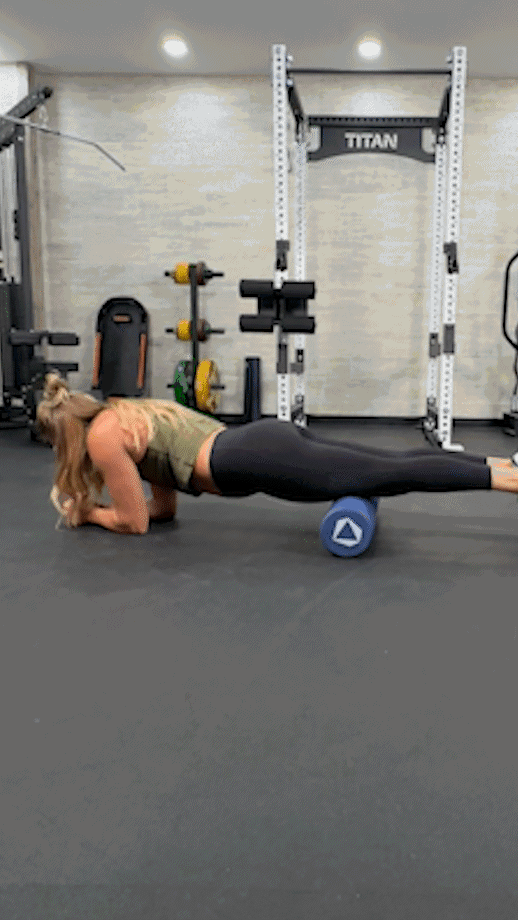
Hip Flexor Roll
Overview: A multi-direction rolling movement that targets your hip flexors.
Who should do it: Hip flexor rolls, like quad rolls, work well after leg day or for sedentary individuals. While stretching is great, rolling hits the muscle tissue and fascia, or connective tissue, which static stretching cannot do alone.
How to do it:
- From the forearm plank position, place the foam roller beneath your left hip flexor, gently bending your right leg away from the body.
- With your weight on your arms, slowly roll up and down and/or side to side on the foam roller for 30 seconds. Then, switch sides and repeat.
RELATED: 12 Hip Flexor Exercises To Improve Mobility And Relieve Pain
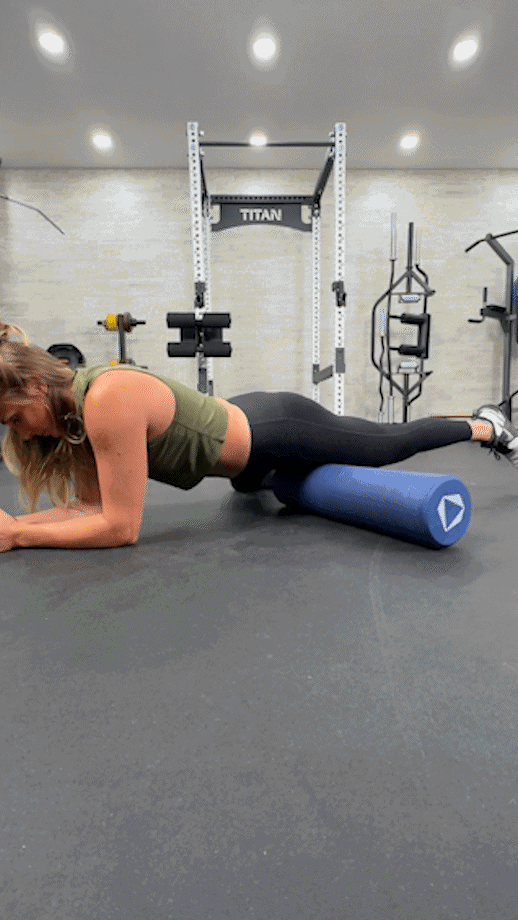
Calf Roll
Overview: A vertical rolling movement that targets your calf muscles.
Who should do it: Calf rolls are great as part of a post-leg day cooldown routine, but they’re also good after a run, jog, or long walk.
How to do it:
- Sit on the floor with your legs straight and the roller under your calves. Lift your butt off the floor using your arms so your weight is on the roller. Cross your left leg over your right to increase the effect.
- Use your arms to guide your body forward and back, rolling your lower leg from knee to ankle. Then, switch legs and repeat.
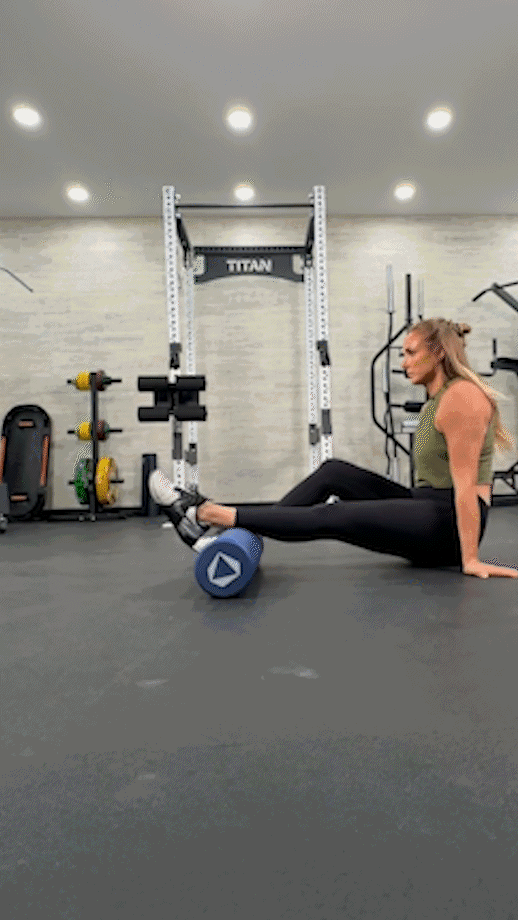
Hamstring Roll
Overview: A vertical rolling movement that targets your hamstrings.
Who should do it: When those hammies are squealing, the hamstring roll is your best friend. It’s great for after a lower-body workout, cardio, or long periods of sitting down.
How to do it:
- Sit on the floor, legs extended, placing the foam roller beneath your hamstrings. Lift your body off the floor so your weight is on the roller.
- Gently roll between the back of your knees and your glutes, lingering on tender spots.
- Continue for approximately 30 seconds.
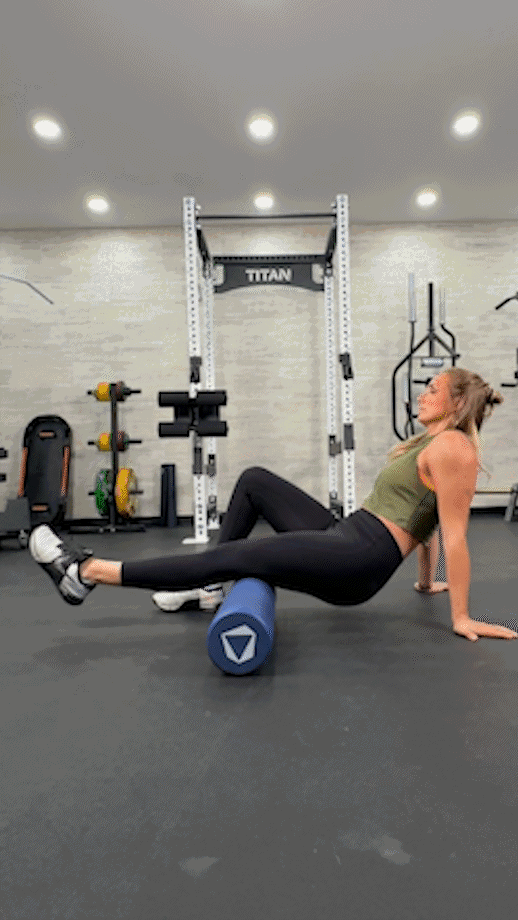
IT Band Roll
Overview: A vertical rolling movement across the IT band.
Who should do it: The IT band is connective tissue that stretches the length of your outer thigh. Everyone can benefit from rolling it out, but runners, in particular, will benefit from loosening their IT band up.
How to do it:
- Lie on your right side, positioning your foam roller along your outer right thigh.
- Rest your bodyweight on your right forearm, with your right leg straight, left leg bent, and left foot placed on the floor in front of your body.
- Slowly roll the length of your right IT band for about 30 seconds, then switch to your left side.
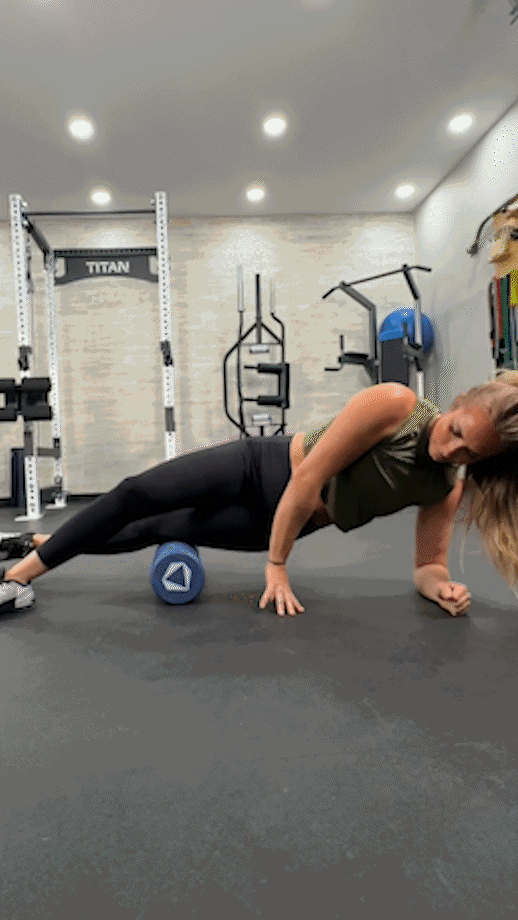
Glutes Roll
Overview: A rolling movement that targets your glute muscles.
Who should do it: Glute rolls feel great after a set of squats, but they’re also useful for alleviating lower back pain because they hit the piriformis, a deep glute muscle.
How to do it:
- Get on the floor and sit right on top of the foam roller.
- Cross your right ankle over your left knee and shift your weight onto your glute muscle.
- Slowly roll back and forth along the muscle, then switch sides.
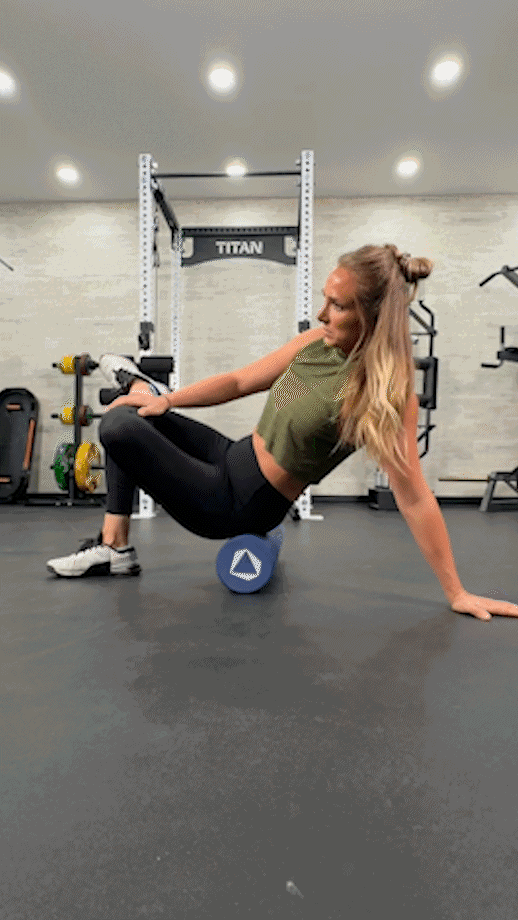
Lat Roll
Overview: A movement that targets the latissimus dorsi.
Who should do it: Tight lats negatively affect your posture, so anyone who needs to feel refreshed and revitalized can benefit from the lat roll. It’s also great after hammering out big sets of pull-ups, chin-ups, or lat pull-downs.
How to do it:
- Lie on your right side with your right leg straight and your left leg bent to brace your bodyweight. Tuck the foam roller into your right armpit against the lat muscle.
- Roll from the armpit to the mid-back region for about 30 seconds, then switch sides.
RELATED: Best Lat Pulldown Machines
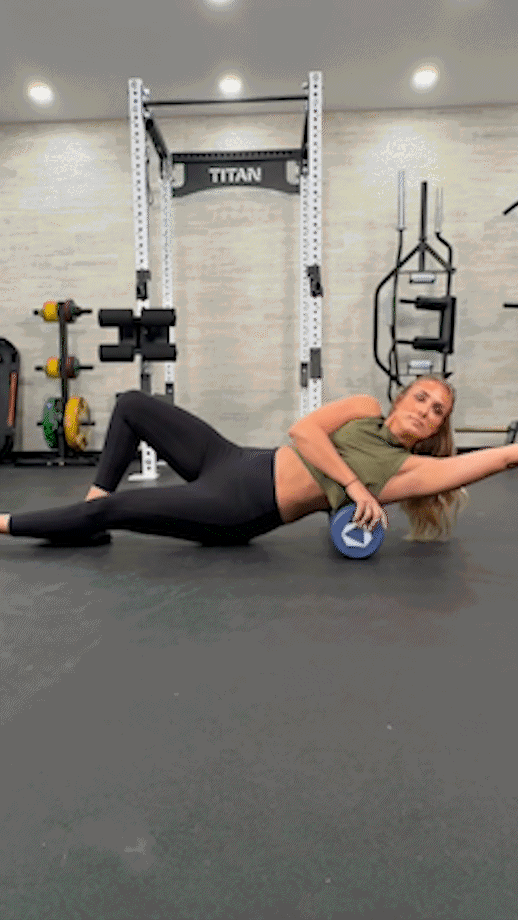
Upper Back Roll
Overview: A vertical rolling movement that targets the upper back muscles.
Who should do it: Upper back rolls are great after shoulder and back exercises, such as the military press, bent-over row, and barbell shrug. They’re also good for anyone with poor posture, as rolling out these muscles will release muscle tension and provide relief.
How to do it:
- Place the roller behind your upper back as you lie on the floor.
- Bend your knees, plant your feet, and brace your core to come off the floor into a bridge position. Your weight should rest on your feet and the roller.
- Slowly roll along the thoracic spine from the neck to mid-back for 30 seconds.
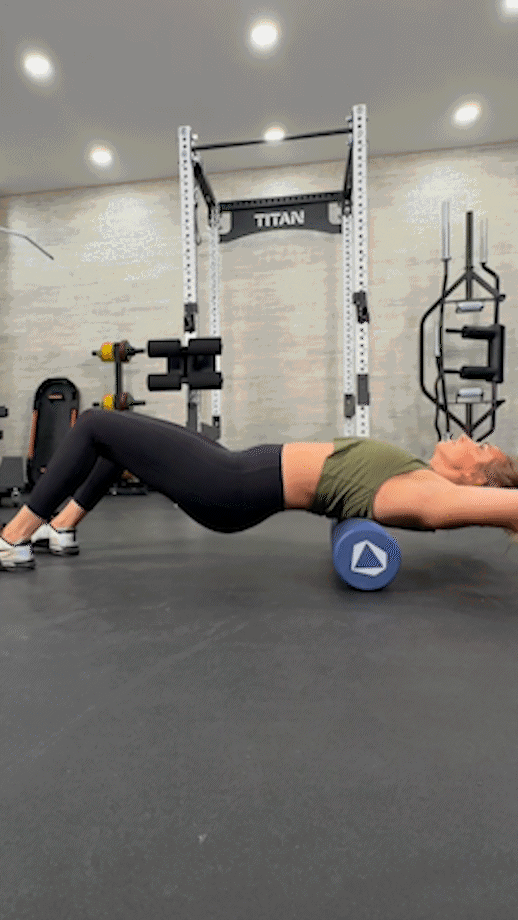
Lower Back Roll
Overview: A vertical rolling movement that targets the lower back muscles.
Who should do it: Lower back rolls are excellent after exercises like the deadlift, but sedentary individuals, those with poor posture, and sufferers of non-specific low back pain may benefit, too.
How to do it:
- Place the roller under your lower back as you lie on the floor.
- Bend your knees, plant your feet, and brace your core to come off the floor.
- Slowly roll from mid-back to your glutes for about 30 seconds.
RELATED: 17 Lower Back Exercises
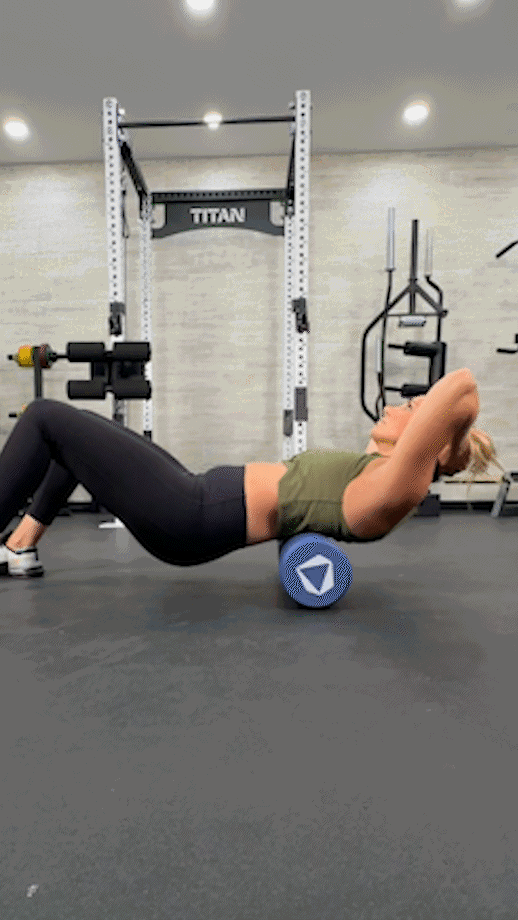
Tips for Foam Rolling Effectively
Foam rolling opens you up to a variety of benefits when done correctly, but how can you be sure you’re doing everything right?
CPT and GGR Senior Staff Writer Amanda Capritto provides a few quick tips to keep in mind as you roll:
- Don’t overwork the area: Less is more when it comes to how long to roll out each muscle group. Approximately 30 to 60 seconds is often sufficient.
- Adjust the pressure to your preference: Many foam roller exercises use your hands and feet for stability. To increase the pressure, lean into the foam roller more.
- Linger on the tender spots: When you find those sweet spots, don’t be afraid to really work them for a few breaths before moving past them.
Following these practices will help ensure you get the most benefits from your foam rolling sessions. When in doubt, consult a certified personal trainer, physical therapist, or other qualified health professional for personalized advice.
Foam Roller Exercises: Final Thoughts
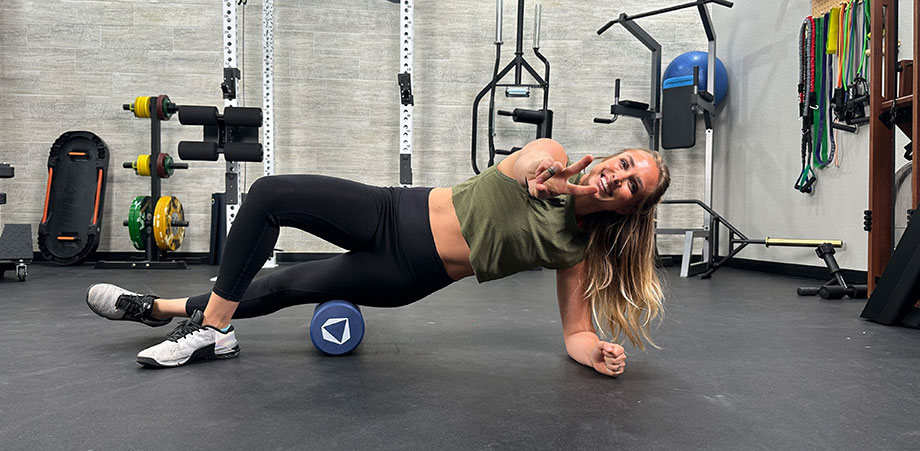
Whether you’re an athlete after a strenuous workout, a sedentary individual looking to get the blood flowing, or rehabbing an injury, foam rolling is an excellent way to reduce muscle pain and stiffness.
When done correctly, foam rolling can help reduce muscle soreness and tightness, improve flexibility and joint range of motion, diminishe the effects of conditions like fibromyalgia, and ultimately enhance a person’s quality of life.
So, grab a foam roller and roll away those aches and pains after your next gym sesh!
Foam Roller Exercises: Q&A
Does foam rolling actually work?
Absolutely. Studies show that foam rolling, combined with static stretching, is effective for reducing delayed-onset muscle soreness, promoting muscle recovery, and increasing flexibility and performance7.
RELATED: The Science Of Post-Workout Recovery
Are massage guns better than foam rolling?
Massage guns and foam rollers are both effective ways to alleviate myofascial pain, release adhesions, and target trigger points in the muscles and fascia, but is one better than the other?
You’ll get a deeper, more precise effect from the massage gun, making it a good pick to really work out a nagging pain. The foam roller, likewise, provides a comparatively softer touch, and it’s much better for larger areas.
RELATED: Foam Roller Vs Massage Gun
How do I know if I’m using a foam roller the right way?
If you’re performing the foam rolling exercises properly, you will feel some discomfort in the target muscle groups. The pain should be “comfortably uncomfortable” or unpleasant but not unbearable.
You also don’t want to feel as though you’re contorting your neck, back, or any other body part out of alignment. Keep a neutral neck and spine, and move slowly and gradually instead of jerking or twisting abruptly.
When in doubt, consult a personal trainer, physical therapist, or other qualified health professional.
These statements have not been evaluated by the Food and Drug Administration. This product is not intended to diagnose, treat, cure, or prevent any diseases.
References
1. Crivelli D, Di Ruocco M, Balena A, Balconi M. The Empowering Effect of Embodied Awareness Practice on Body Structural Map and Sensorimotor Activity: The Case of Feldenkrais Method. Brain Sci. 2021 Dec 1;11(12):1599. doi: 10.3390/brainsci11121599. PMID: 34942901; PMCID: PMC8699347.
2. Mauntel, Timothy & Clark, Michael & Padua, Darin. (2014). Effectiveness of Myofascial Release Therapies on Physical Performance Measurements: A Systematic Review. Athletic Training & Sports Health Care. 6. 189-196. 10.3928/19425864-20140717-02.
3. Pearcey GE, Bradbury-Squires DJ, Kawamoto JE, Drinkwater EJ, Behm DG, Button DC. Foam rolling for delayed-onset muscle soreness and recovery of dynamic performance measures. J Athl Train. 2015;50(1):5-13. doi:10.4085/1062-6050-50.1.01
4. Škarabot J, Beardsley C, Štirn I. Comparing the effects of self-myofascial release with static stretching on ankle range-of-motion in adolescent athletes. Int J Sports Phys Ther. 2015;10(2):203-212.
5. Ceca D, Elvira L, Guzmán JF, Pablos A. Benefits of a self-myofascial release program on health-related quality of life in people with fibromyalgia: a randomized controlled trial. J Sports Med Phys Fitness. 2017;57(7-8):993-1002. doi:10.23736/S0022-4707.17.07025-6
6. Su H, Chang NJ, Wu WL, Guo LY, Chu IH. Acute Effects of Foam Rolling, Static Stretching, and Dynamic Stretching During Warm-ups on Muscular Flexibility and Strength in Young Adults. J Sport Rehabil. 2017;26(6):469-477. doi:10.1123/jsr.2016-0102
7. Konrad A, Nakamura M, Bernsteiner D, Tilp M. The Accumulated Effects of Foam Rolling Combined with Stretching on Range of Motion and Physical Performance: A Systematic Review and Meta-Analysis. J Sports Sci Med. 2021 Jul 1;20(3):535-545. doi: 10.52082/jssm.2021.535. PMID: 34267594; PMCID: PMC8256518.
Further reading

Dips vs Pull-ups. Which one should you choose? Here we’ll deep-dive into both for your muscle-building pleasure. Read more

In this Arc Trainer vs elliptical guide, we’ll highlight the similarities and differences to help you decide which cardio machine is right for you. Read more

What do you do after a great workout— hit the showers, down your best protein shake, take a little time to stretch and stave off that all-too-familiar post-workout DOMS?Practicing a little self-care after your daily dose of fitness is always an excellent idea. And when it comes to the best post-workout recovery practices, foam rolling is one of the best.Foam rolling reduces tightness, alleviates muscle soreness, » Read more about: 9 Foam Roller Exercises to Help Release Knots and Relieve Soreness » Read more

Hitting the road? Check out our guide to travel workouts, which includes three options to keep you moving while you’re away from home. Read more

